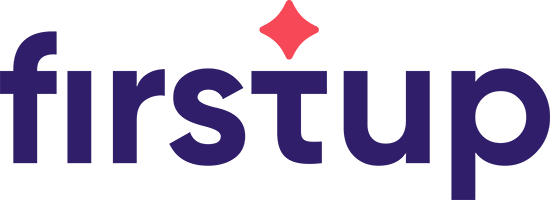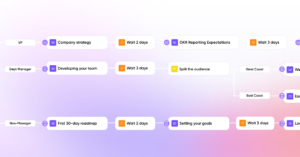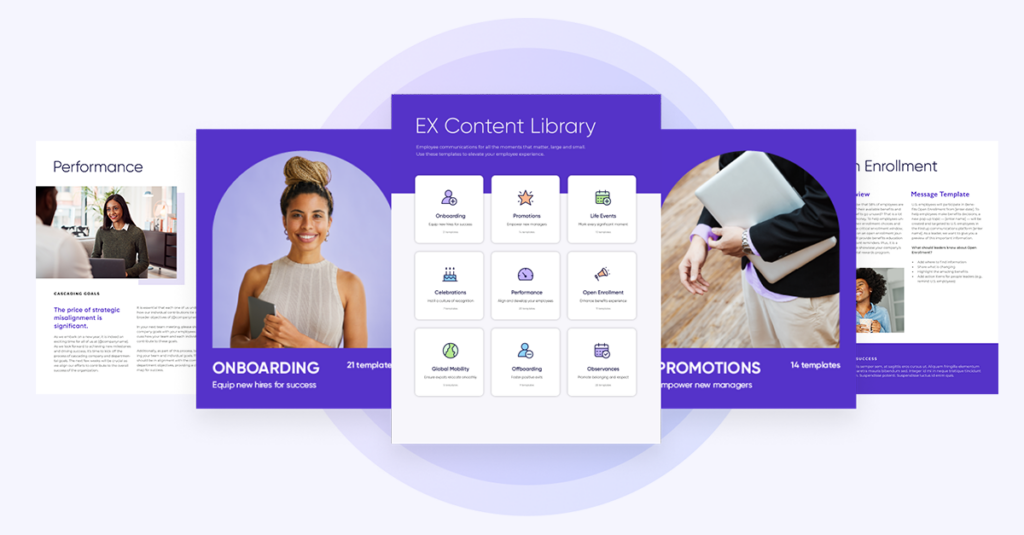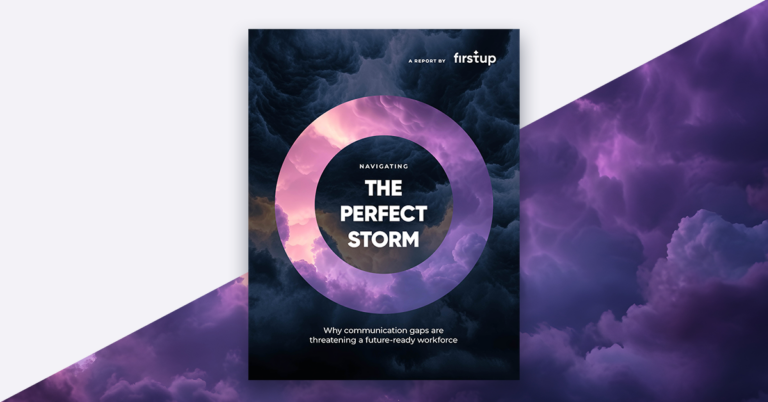Most HR professionals, managers, and recruiters understand the importance of a diverse workforce in the business world today. And even if you aren’t in management, you most likely know that a diverse workplace contributes to the success of an organization. It just makes sense that having teams made up of people from various backgrounds, with different perspectives, pushes your company to be the best it can be. In fact, as of 2021, the Forbes 500 list now tracks “diversity and inclusion” as a metric when it comes to ranking companies.
And while a majority of companies are developing and implementing their diversity strategies, a lot of them are not doing all they can do to recruit and hire a diverse workforce. It’s not enough to just meet diversity quotas by hiring a few diverse employees; companies must strive to build teams of qualified candidates regardless of their background, race, age, disability, gender, religion, or sexual orientation, which makes for a truly equal workplace.
In this blog, we are going to look at several ways you can improve your recruiting strategy for a more diverse workforce, including best practices and strategies to ensure that your company can realize the rewards that authentic organizational diversity provides. But first, let’s take a look at the definition of diversity recruiting so we’re all on the same page.
What is diversity recruiting?
The U.S. Department of Housing and Urban Development defines workplace diversity as:
“(Encompassing) the range of similarities and differences each individual brings to the workplace, including but not limited to national origin, language, race, color, disability, ethnicity, gender, age, religion, sexual orientation, gender identity, socioeconomic status, veteran status, and family structures. We define workforce diversity as a collection of individual attributes that together help us pursue organizational objectives efficiently and effectively.”
Diversity in the workplace is the concept that your organization’s makeup should be a mirror of general society at large. And diversity recruiting is making hiring decisions based only on merit, taking special consideration to reduce any inherent (race, sex, age, etc.) or acquired (education, skills, experience, etc.) biases. It’s not only the morally correct way of hiring, it’s also a positive for meeting your business goals.
Recruiting strategy for a diverse workforce
Gartner has found that inclusive teams perform up to 30% better in high-diversity environments, and according to the World Economic Forum, companies with above-average diversity scores drive 45% average revenue from innovation while companies with below-average scores drive only 26%. It’s very clear that diversity leads to business success, so let’s take a closer look at ways you can improve your recruiting of underrepresented groups.
Audit your job listings
If you’ve been copy and pasting your job listings for years, it’s time to make some edits. Biased language, even if unintentional, discourages diverse talent pools from applying for open positions. Before publicizing a job opening, be sure to check them for bias and ensure they are inclusive of any and all available candidates. Things to look for include:
Biased language
Research has shown that some words and phrases used in job postings can feed into unconscious biases of people looking for a job, meaning that a great candidate may not even bother applying. As an example, certain words – like confident, competitive – are interpreted as being “more masculine”, while other words – like honest, cooperative – are deemed to be “more feminine”. To ensure you hear from the best candidates, your job ads should:
- Use gender neutral titles, e.g., “Salesperson” instead of “Salesman”
- Never mention race or national origin
- Avoid phrases like “native English-language skills” or “recent college grads” which may deter qualified applicants
- Rework your skill requirements. Instead of “must be able to lift 25 pounds”, say “must be able to move equipment weighing 25 pounds”.
- Use ADA-Compliant Language
- Be sure your branding and messaging makes it clear that your organization welcomes diverse applicants
Strict qualification criterias
By focusing more on performance objectives, and not just required qualifications, you are much more likely to receive applications from a diverse group of candidates. Linkedin reported that men apply for a job when they meet only 60% of the qualifications, but women apply only if they meet 100% of them. Since job seekers often take a list of qualifications literally, you should avoid putting together a comprehensive list of qualifications that just aren’t actually necessary to do a job. So if you aren’t getting as diverse a group of applicants as you expected, it’s time to re-examine what you’re saying a candidate needs to know in order to get hired.
Some tips:
- Focus on competencies rather than education/degree
- Avoid complex language/jargon when possible
- Use the phrase “familiarity with” rather than “experience with”
- Do not use wording that reflects ageism and ableism, such as “fast-paced” and “fast-moving”
- Consider a candidate’s ability to grow and learn in a position, rather than meet a strict set of requirements needed right away
And finally, be sure that a job listing qualification actually meets the needs for a position. A thread on Reddit from a few years ago made fun of a job listing that required a minimum of 12 years experience in Kubernetes. The kicker? It had only been released six years earlier. Don’t let this be you!
Target job boards for diverse candidates
If you are focusing on recruiting a more diverse workforce, the last thing you want to do is write up a job description and just post it on the same ole’ job sites. To reach underrepresented groups, you’re going to need to recruit candidates who are perusing diversity-focused job boards. Here are a few websites where you can post your next opportunity and reach highly-qualified candidates from differing backgrounds.
Diversity.com
Offer internships for underrepresented groups
A study of nearly 4,000 graduating students found that 74% of White respondents landed paid internships, while only 6% of African-American respondents did the same. That’s a statistically significant disproportionality in internship attainment, which does continue across different demographics. For example:
- White students are more likely to be paid interns than unpaid or never interns;
- African-American students are more likely to be unpaid interns;
- Asian-American students are more likely to be paid interns;
- Hispanic-American students are more likely to never have an internship than an unpaid or paid internship;
- Multi-racial Americans are more likely to be unpaid or never interns
Because students who can list internships on their resumes are often more likely to find good jobs after they graduate, these percentage gaps can leave a lot of students without opportunities that others get. In order to ensure you recruit a diverse workforce, you are going to need to reach out to local schools, community organizations, and professional associations to offer internships and co-op positions to students from varying backgrounds.
In addition, there are many good nationwide non-profit organizations, like INROADS, that can help you find interns for your workplace. Alternatively, there are government groups like The National Diversity Internship Program (NDIP), administered by the U.S. Department of the Treasury.
Remove bias from the interview process
Did you know that when recruiters are searching for job candidates on Linkedin, they are more likely to open a man’s profile than a woman’s? If you are looking to hire a more diverse workforce, one way to do so is to remove names, graduation years, and other identifying personal information from resumes before they are reviewed.
By conducting blind interviews with blind resumes, it can reduce unconscious biases from the hiring process. Here’s a helpful guide from Glassdoor to get you started.
Ask diverse employees to make referrals
If you start to notice a lack of diversity in your organization and/or talent pool, now may be a good time to ask your diverse employees for referrals. This is a great way to not only source diverse talent, but also demonstrate to everyone that your company is committed to maintaining a diverse workplace. You can do this by directly asking your employees for help finding new team members, or, even better, via an Employee Referral Program.
These are structured, organizational programs that employers utilize to have employees recommend candidates for job openings. Employers can offer incentives for new hires that come from staff leads, like extra time off and cash bonuses, and referrals have even been proven to boost employee retention rates, as a friend or family member of a current employee is likely to be a better match for a company’s culture and values because the two are already connected.
An added bonus of internal referrals is that it can speed up the hiring timeline and save your company money on recruiting costs. After all, 82% of employers rate employee referrals above all other sources for generating the best return on investment!
Conclusion
A diverse workforce is not just important to the success of your organization; it’s also top of mind for job seekers. A recent study of them found that 67% thought that diversity is an important factor when considering whether or not to work at a company. It’s no longer enough to just put “Equal Opportunity Employer” on your website and hope for the best. In order to recruit a more diverse workforce, you’re going to need to implement some of these tips to ensure you find the best employees that make for a good fit to attain your company’s goals.
Want to learn some tips on recruiting and retaining employees for your manufacturing business? See our ebook for more information:
Download PDF








